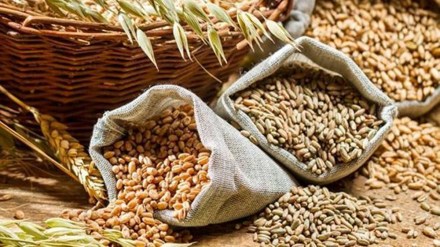The government on Wednesday set a marginally higher target of 332 million tonne (MT) of foodgrains production for the 2023-24 crop year (July-June) against the estimated output of 323.5 MT in the current crop year.
The target was set at the national conference on agriculture- kharif campaign-2023 organised by agriculture ministry despite the possibility of a deficient monsoon due to likely El Nino conditions developing at the later part of the monsoon months (June-September).
Also read: Module import curbs to hit solar projects, says industry body
According to an official statement, the objective of the conference was to review and assess the crop performance during the preceding seasons and fix crop-wise targets for the forthcoming kharif season in consultation with state governments and ensure supply of critical inputs such as fertiliser and pesticides.
In the next crop year (2023-24), target for production of pulses including chana, arhar and moong have been fixed at 29.2 MT compared to 27.8 MT in the current crop year. The oilseeds including soybean, groundnut and mustard production is likely to be increased from 44 MT in 2023-24 from 40 MT in the current crop year.
The statement said that the focus in the forthcoming kharif season would be to increase area through inter-cropping and crop diversification and productivity enhancement through introduction of high yielding varieties and adoption of suitable agronomic practices in low yielding regions.
Addressing the conference, agriculture minister Narendra Singh Tomar asked states to promote technology in the farm sector to cut input cost, boost production and enhance farmers’ income.
Tomar said the use of technology can help in making farming profitable by reducing input cost and increasing production.”We not only need to meet demand of the domestic market, but we have to fulfil the expectations of foreign countries for supply of agricultural items,” he said.
Also read: IMF asks RBI, other Asian central banks to keep policy tight
Agriculture secretary Manoj Ahuja said that the India Meteorological Department has predicted ‘normal’ monsoon rains (June-September) with the likelihood of El Nino conditions developing in later parts of the season.
“We should be prepared for the worst situation. There are chances of less rains and there are chances that El Nino conditions might not occur. There should be complete preparedness at the state level,” he advised the states at the national conference.
El Nino, which results in the warming of the waters in the Pacific Ocean, is usually associated with the weakening of the monsoon in the country.
